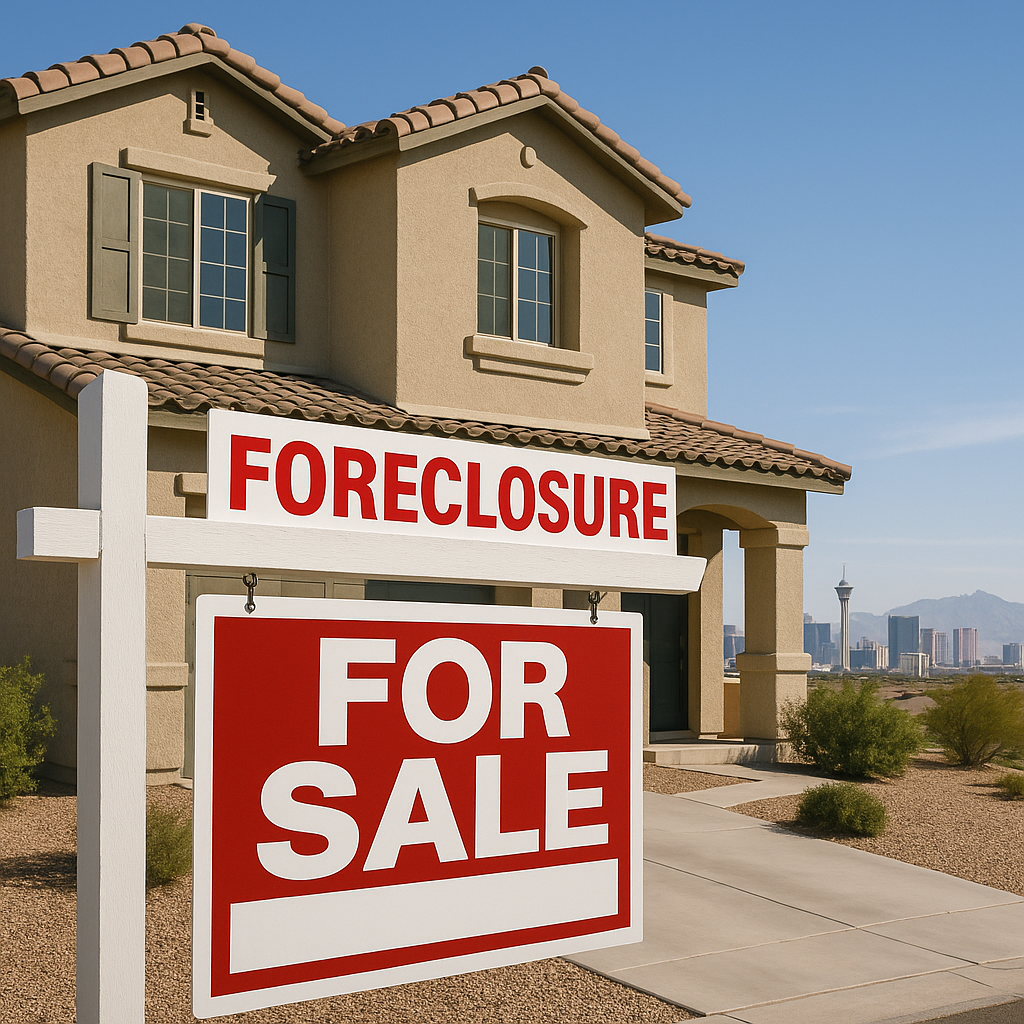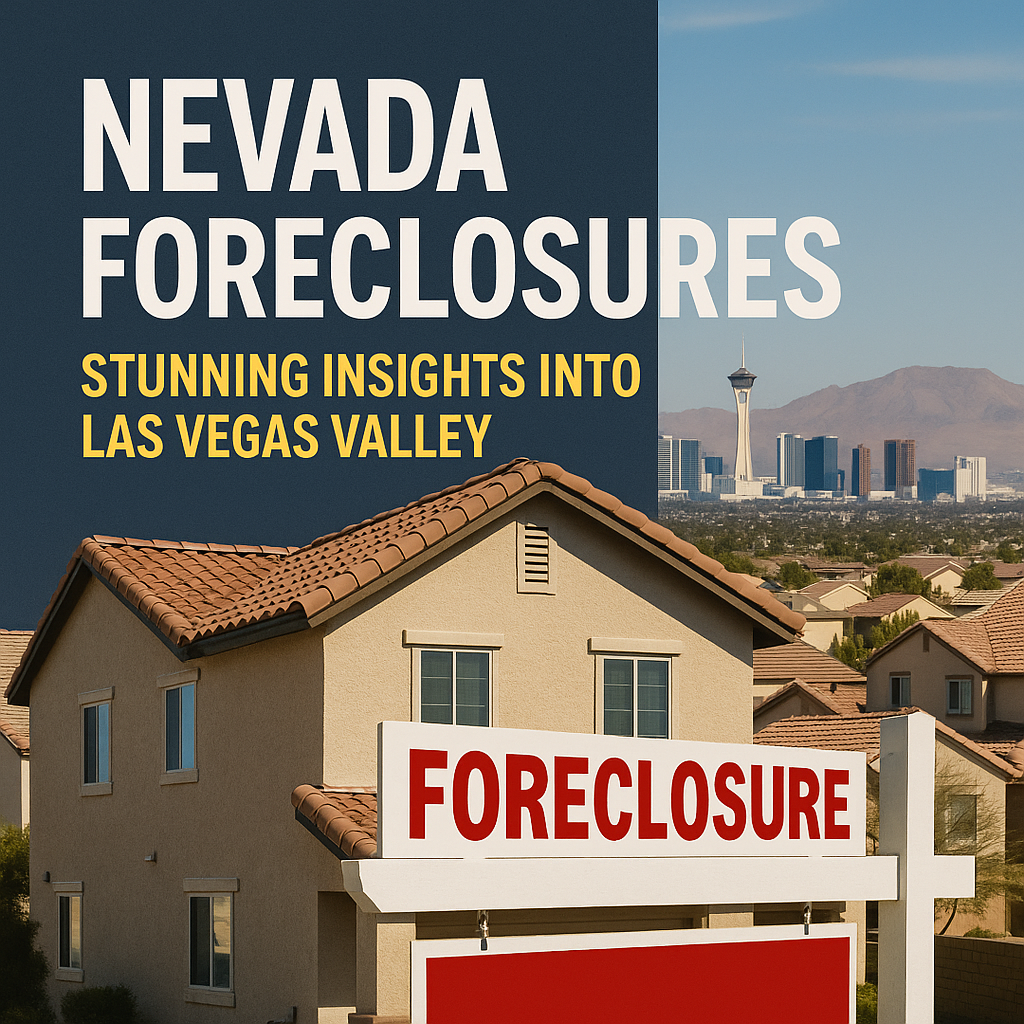Nevada Foreclosures: Stunning Insights into Las Vegas Valley
Nevada Foreclosures: Stunning Insights into Las Vegas Valley
Nevada foreclosures have become a hot topic in recent months, reflecting a complex interplay of economic conditions and housing market dynamics. As Las Vegas Valley contends with a fluctuating real estate landscape, understanding the nuances of foreclosures in this region is essential for both prospective buyers and current homeowners. Recent data paints a vivid picture of where the state and its largest city stand in the national context of foreclosures.
An Overview of the Current Foreclosure Landscape

The Las Vegas Valley has witnessed an unsettling increase in foreclosure rates recently, positioning it among the top areas in the United States for such home losses. According to a report by the Las Vegas Review-Journal, Nevada ranks highly in terms of the number of homes in foreclosure, a trend exacerbated by rising interest rates and economic pressures stemming from inflation.
Key Statistics
– Rate Comparison: As of late summer 2023, the state of Nevada had the fourth-highest foreclosure rate in the nation.
– County Insights: Clark County, which includes the majority of Las Vegas, contributed significantly to this statistic, making it a focal point for housing analysts.
While the numbers alone could paint a grim picture, digging deeper reveals a more nuanced story.
Factors Contributing to the Foreclosure Surge
Understanding the reasons behind the surge in foreclosures is crucial. A variety of economic factors converge to create this challenging environment:
1. Rising Interest Rates
The Federal Reserve’s actions to combat inflation have led to increased interest rates. According to reports from 8 News Now, many homeowners who previously enjoyed low mortgage rates are now facing financial strain as their adjustable-rate mortgages readjust or as new purchasers struggle to enter the market.
2. Economic Uncertainty
With broader economic shifts, including job market fluctuations and cost-of-living increases, many families find it challenging to keep up with mortgage payments. Some analysts warn that while the job market remains relatively solid, wage growth hasn’t kept pace with inflation, leaving families stretched thin.
3. Housing Supply and Demand
Despite reports of rising foreclosures, the demand for housing in Las Vegas continues, albeit with a notable shift toward rental properties. The imbalance between supply and demand fuels prices, adding pressure on homeowners who may already be on unstable financial ground.
4. Investor Activity
Interestingly, the influx of real estate investors capitalizing on foreclosures can be both a silver lining and a complicating factor. As outlined in multiple news sources, these investors often purchase distressed properties, which can help stabilize local markets but can also contribute to rising home prices, thus worsening the affordability issue for average buyers.
Insights from Industry Experts
Responses from real estate experts regarding the current situation vary. On one hand, some urge a cautious approach, highlighting the state’s heavy reliance on tourism and hospitality, which remain sensitive to economic downturns. Others point to potential recovery signals, arguing that the market may soon stabilize due to a denser rental market and investor interest.
A Balanced Perspective
While the statistics may evoke concern, a broader view is necessary. Foreclosures, while painful for affected homeowners, can simultaneously offer opportunities for investors and, ultimately, for the housing market’s longevity.
Both the Las Vegas Review-Journal and 8 News Now emphasize the importance of carefully watching trajectories in the housing market. Investors may be poised to play a critical role in taking on foreclosed properties and turning them into rental properties, which could mitigate some immediate impacts of the foreclosure crisis.
Conclusion: Navigating Uncertainty
In conclusion, Nevada foreclosures indeed reveal stunning insights into the Las Vegas Valley’s housing market. While the rising rates of foreclosures signal a troubling trend, they also serve to highlight the ongoing shifts in the real estate market influenced by local and national economic currents. Understanding these dynamics is key for anyone involved in this complex ecosystem—whether as a homeowner, a prospective buyer, or an investor looking to make informed decisions.
As we observe the unfolding situation, vigilance and adaptability will be vital in navigating the uncertainties that lie ahead. With the housing market often reflecting deeper economic realities, it’s crucial for stakeholders to engage comprehensively with these developments. Whether it results in renewed opportunities for homeownership or continues to reflect broader economic challenges, the story of Nevada foreclosures in the Las Vegas Valley is one worth following.






